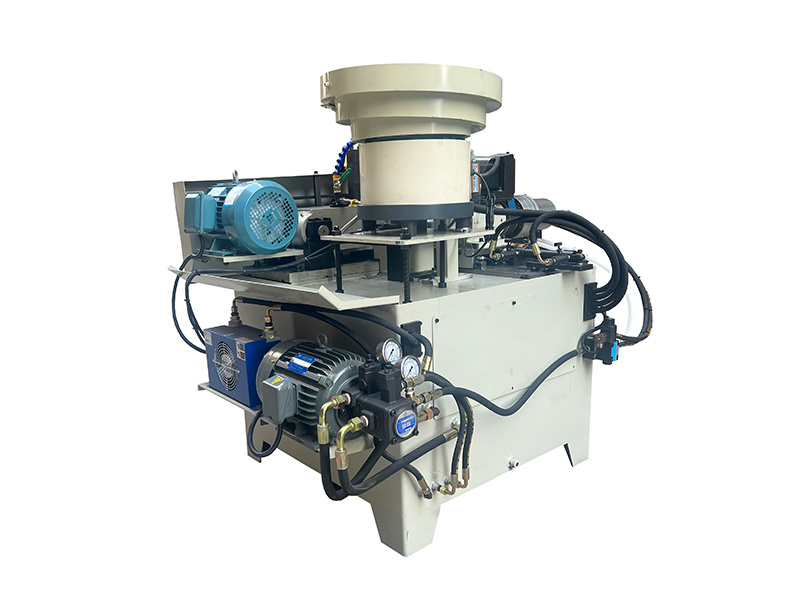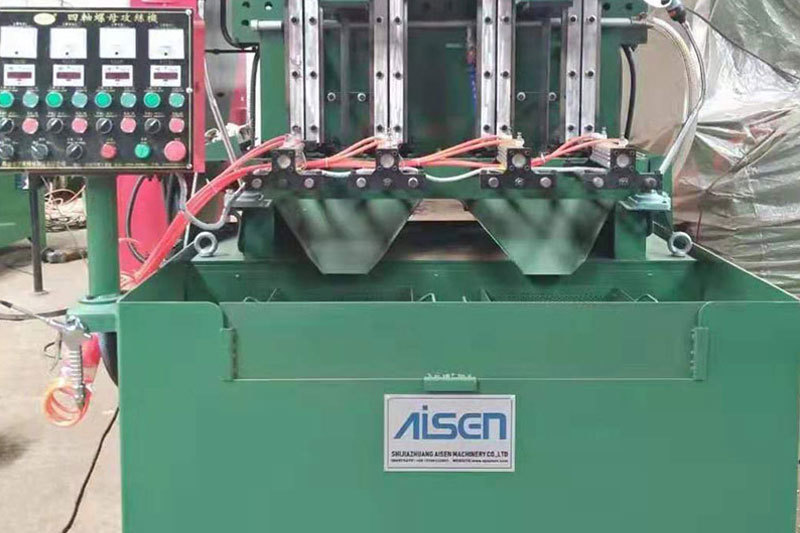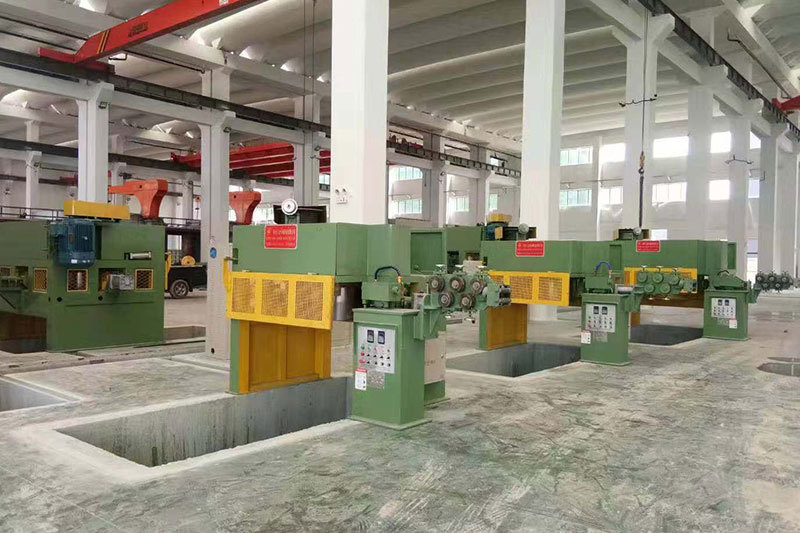Exploring the Different Types of Chamfering Machines Available Today
Summary:
Exploring the Different Types of Chamfering Machines Available Today
Chamfering machines play a crucial role in the manufacturing and machining sectors, allowing for enhanced efficiency and precision in the finishing of edges. Understanding the various types of chamfering machines available today is essential for businesses looking to optimize their production processes. This extensive guide will

Exploring the Different Types of Chamfering Machines Available Today
Chamfering machines play a crucial role in the manufacturing and machining sectors, allowing for enhanced efficiency and precision in the finishing of edges. Understanding the various types of chamfering machines available today is essential for businesses looking to optimize their production processes. This extensive guide will explore the different types of chamfering machines, their applications, and advantages to help you make informed decisions.
Table of Contents
1. Introduction to Chamfering Machines
2. Types of Chamfering Machines
1. Manual Chamfering Machines
2. Electric Chamfering Tools
3. Pneumatic Chamfering Machines
4. CNC Chamfering Machines
3. Applications of Chamfering Machines
4. Benefits of Using Chamfering Machines
5. Choosing the Right Chamfering Machine
6. Maintenance Tips for Chamfering Machines
7. Future Trends in Chamfering Technology
8. Frequently Asked Questions
9. Conclusion
Introduction to Chamfering Machines
Chamfering machines are specialized tools that create beveled edges on various materials, including wood, metal, and plastic. The primary purpose of chamfering is to remove sharp edges, enhancing safety and aesthetics. In today's fast-paced manufacturing environment, selecting the right chamfering machine can significantly impact production efficiency and quality.
Types of Chamfering Machines
Understanding the various types of chamfering machines is vital for selecting the best tool for specific applications. Below are the four main categories of chamfering machines.
Manual Chamfering Machines
Manual chamfering machines are operated by hand, making them suitable for small-scale production or custom jobs. These machines are ideal for workshops where space is limited, and versatility is essential. They typically consist of a handheld tool with adjustable angles for precise chamfering.
**Advantages of Manual Chamfering Machines:**
- **Cost-effective:** Manual machines are generally less expensive than automated options.
- **Portability:** Easy to transport and use in various locations.
- **Flexibility:** Allows for quick adjustments and custom jobs.
Electric Chamfering Tools
Electric chamfering tools offer a more efficient alternative to manual machines. They are powered by electricity, enabling quicker and more consistent chamfering. These tools are often used in larger manufacturing settings, where speed and efficiency are crucial.
**Key Features of Electric Chamfering Tools:**
- **Time-saving:** Reduced operational time compared to manual methods.
- **Precision:** Enhanced accuracy due to consistent power delivery.
- **Reduced operator fatigue:** Electric tools require less physical effort from users.
Pneumatic Chamfering Machines
Pneumatic chamfering machines utilize compressed air to operate, making them ideal for heavy-duty applications. They are commonly used in large factories and assembly lines, where power and speed are critical.
**Benefits of Pneumatic Chamfering Machines:**
- **High power-to-weight ratio:** Offers significant power without excessive weight.
- **Durable:** Designed for continuous use in demanding environments.
- **Versatile:** Suitable for a wide range of materials and thicknesses.
CNC Chamfering Machines
Computer Numerical Control (CNC) chamfering machines represent the pinnacle of chamfering technology. These machines are automated and programmed to execute precise chamfering tasks with minimal human intervention. CNC machines are perfect for high-volume production runs, ensuring consistent quality and accuracy.
**Advantages of CNC Chamfering Machines:**
- **Automation:** Reduces labor costs and human error.
- **Consistency:** Delivers uniform chamfers across large batches.
- **Complex shapes:** Capable of producing intricate designs that manual machines cannot achieve.
Applications of Chamfering Machines
Chamfering machines are used in a variety of industries, including aerospace, automotive, and construction. Their ability to create smooth, beveled edges is essential for both functional and aesthetic purposes.
**Common Applications Include:**
- **Metalworking:** Preparing edges for welding or assembly.
- **Woodworking:** Enhancing furniture and cabinetry finishes.
- **Plastic fabrication:** Creating smooth edges for better product usability.
Benefits of Using Chamfering Machines
Investing in chamfering machines brings numerous advantages, enhancing production efficiency and quality.
**Key Benefits:**
- **Improved Safety:** Removes sharp edges, reducing injuries.
- **Enhanced Aesthetics:** Creates visually appealing finishes on products.
- **Increased Productivity:** Streamlines operations, enabling faster production times.
Choosing the Right Chamfering Machine
Selecting the appropriate chamfering machine involves several considerations, including material type, production volume, and required precision.
**Factors to Consider:**
- **Material Compatibility:** Ensure the machine can handle the materials you work with.
- **Production Expectations:** Choose a machine that aligns with your production needs, whether manual, electric, pneumatic, or CNC.
- **Budget Constraints:** Assess your financial budget and choose a machine that offers the best return on investment.
Maintenance Tips for Chamfering Machines
Proper maintenance is essential for maximizing the lifespan and performance of chamfering machines. Here are some practical tips:
**Regular Maintenance Practices:**
- **Cleaning:** Keep the machine and cutting tools clean to prevent debris buildup.
- **Lubrication:** Regularly lubricate moving parts to reduce wear and tear.
- **Inspection:** Frequently check for signs of damage or wear and replace parts as needed.
Future Trends in Chamfering Technology
The chamfering machine industry is evolving rapidly, with advancements in technology driving innovation. Some notable trends include:
- **Smart Technology Integration:** The rise of IoT (Internet of Things) enables real-time monitoring and adjustments.
- **Sustainable Manufacturing:** Increased focus on eco-friendly practices and materials is shaping the development of new chamfering machines.
- **Customization:** More manufacturers are tailoring machines to meet specific customer needs, enhancing their versatility.
Frequently Asked Questions
**Q1: What materials can chamfering machines process?**
A1: Chamfering machines can work with a variety of materials, including metals, plastics, and wood, depending on the type of machine and cutting tools used.
**Q2: How do I determine the right chamfering machine for my needs?**
A2: Assess your production volume, the materials you work with, and your budget to identify the best chamfering machine for your specific requirements.
**Q3: Can manual chamfering machines produce the same quality as CNC machines?**
A3: While manual machines can produce high-quality chamfers, CNC machines provide greater precision and consistency, especially for high-volume production.
**Q4: How often should I perform maintenance on my chamfering machine?**
A4: Maintenance frequency depends on usage, but a good rule of thumb is to perform cleaning and inspections regularly and lubricate moving parts as needed.
**Q5: Are there any safety precautions I should consider when using chamfering machines?**
A5: Always wear appropriate personal protective equipment (PPE), follow the manufacturer's guidelines, and ensure the machine is properly maintained to minimize safety risks.
Conclusion
In summary, understanding the different types of chamfering machines is crucial for manufacturers aiming to enhance their production processes. From manual to CNC machines, each type offers unique benefits and applications that cater to specific industrial needs. By selecting the appropriate machine and implementing proper maintenance practices, businesses can significantly improve their machining operations and product quality. Embrace the innovations in chamfering technology to stay ahead in the competitive manufacturing landscape.
PREVIOUS:
Latest News
AISEN Four axis nut tapping machine ready for shipment to Russia
Four axis nut tapping machine for DIN934 M8,M10 Standard hex nut is ready for shipping to Russia by land transportation.
AISEN machinery inverted wire drawing machine
We hope to cooperate with more customers for mutual development and benefits. You are welcome to contact us









